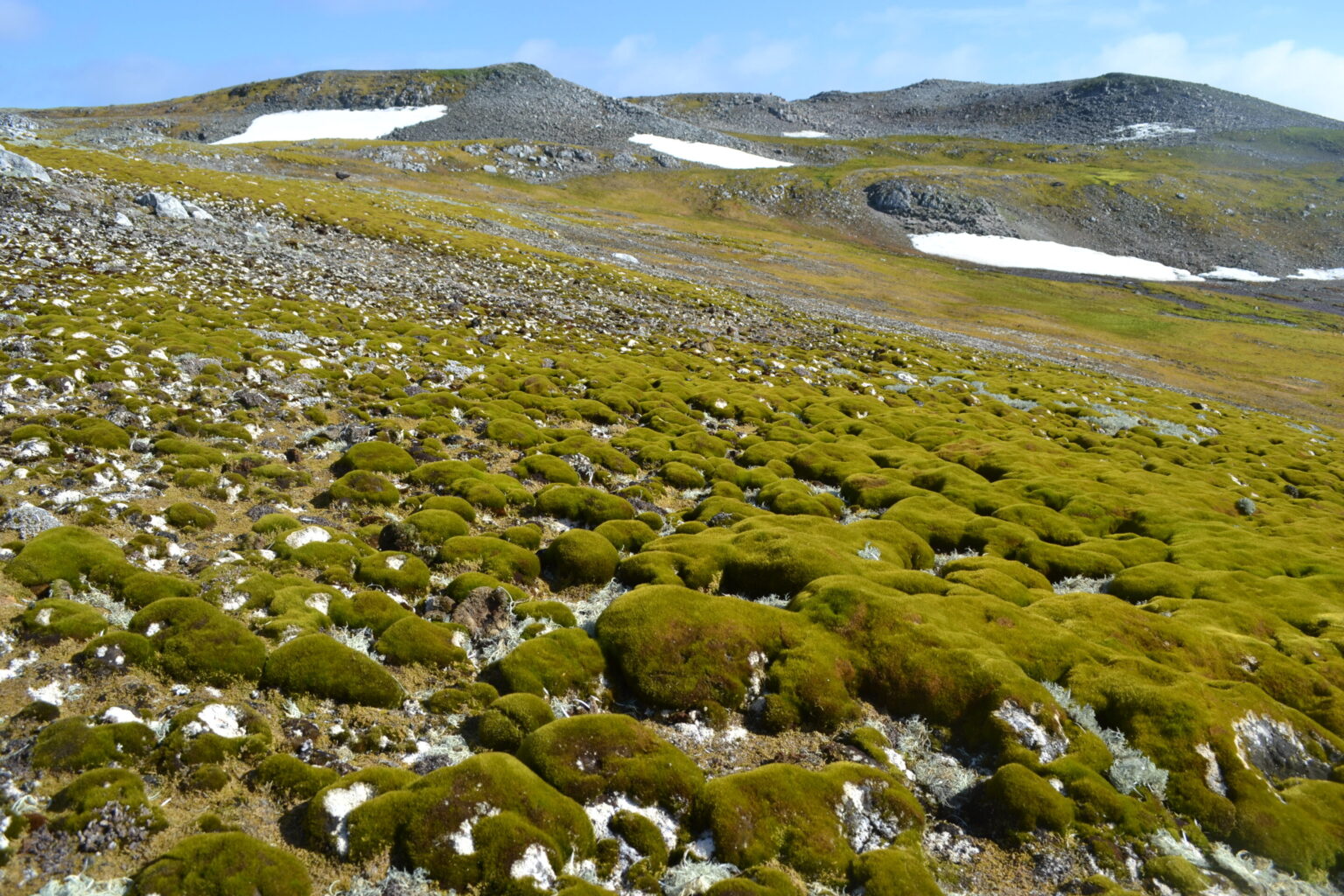Over the last 40 years, the share of land of the southern continent and the surrounding islands covered with vegetation has increased 10 times. Satellite data clearly indicate that Antarctica is getting greener.

Climate change and greening of the Antarctic Peninsula
Vegetation cover on the Antarctic Peninsula has increased more than ten times in the past four decades, new research reveals.
The Antarctic Peninsula, like many polar regions, is warming faster than the global average, and extreme heat events in Antarctica are becoming more common. A new study by the Universities of Exeter and Hertfordshire and the British Antarctic Survey has used satellite data to assess how much the Antarctic Peninsula has “greened” in response to climate change.
It turned out that vegetation cover on the peninsula increased from less than one square kilometer in 1986 to nearly 12 square kilometers in 2021.
Being published in the journal Nature Geoscience, the study also revealed that this greening trend increased by more than 30% in recent years (2016-2021) compared to the full study period (1986-2021) — expanding by more than 400,000 square meters per year over that period. The article is titled “Satellites evidence sustained greening of the Antarctic Peninsula.”
Features of “greening” in Antarctica
In a preliminary study that analyzed soil samples taken from moss-dominated ecosystems, the team found evidence that plant growth rates have increased sharply in recent decades.
This new study uses satellite images to confirm that a large-scale greening trend is ongoing and accelerating on the Antarctic Peninsula.
“The plants we find on the Antarctic Peninsula—mostly mosses—grow in perhaps the harshest conditions on Earth,” said Dr. Thomas Roland, of the University of Exeter.
Dr. Olly Bartlet of the University of Hertfordshire adds: “As these ecosystems become more established—and the climate continues to warm—it’s likely that the extent of greening will increase.”
Soil in Antarctica is mostly poor or non-existent, but increasing the number of plants will impart organic matter and encourage the formation of new soil — potentially creating a pathway for other plants to grow.
This increases the risk of non-native and invasive species that may be introduced by ecotourists, researchers or other visitors to the continent.
Necessity for further research on “greening”
The researchers note the critical importance of further research to establish the specific climatic and ecological mechanisms driving the greening trend.
“The sensitivity of the Antarctic Peninsula’s vegetation to climate change is now clear and, under future anthropogenic warming, we could see fundamental changes to the biology and landscape of this iconic and vulnerable region,” said Dr. Roland.
He also added: “Our findings raise serious concerns about the environmental future of the Antarctic Peninsula, and of the continent as a whole. In order to protect Antarctica, we must understand these changes and identify precisely what is causing them.”
Researchers are now studying how recently degraded (ice-free) landscapes are being colonized by plants, and how this process may continue in the future.
According to phys.org


